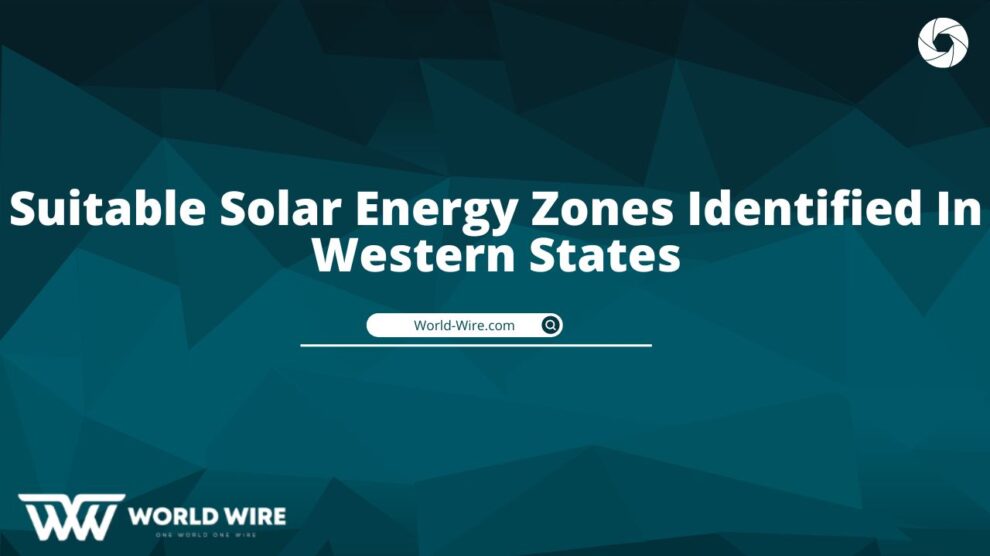This report, analyzing solar energy zones in Arizona, Colorado, New Mexico, Nevada, and Utah, is in anticipation of an announcement by the Department of Interior later this week. As part of the draft Programmatic Environmental Impact Statement (PEIS) that DOI will release on Friday, In the Zone: Powering the Future and Protecting Wildlands with Guided Solar Development sets the stage.
The Wilderness Society’s renewable energy coordinator, Alex Daue, says guiding projects to the best places, not scattering them over the landscape. A common-sense way to speed up responsible development is to designate appropriate zones and require projects to go there. It may be necessary to create additional zones in the future, but we do not want a repeat of the oil and gas mess on public lands.”
From 24 Solar Energy Study Areas identified by the BLM in 2009, the Zoneprofiles presents five proposed Solar Energy Zones (SEZs) – one in Arizona, Colorado, Nevada, New Mexico, and Utah. As well as having abundant solar resources, these zones avoid places such as national monuments, wildlife habitat, designated areas of critical environmental concern, cultural sites in high concentrations, and other sensitive areas.
The proposed zones profiled in In the Zone are:
Brenda proposed SEZ, Arizona
Antonito Southeast proposed SEZ, Colorado
Millers proposed SEZ, Nevada
Afton proposed SEZ, New Mexico
Milford Flats South proposed SEZ, Utah
As part of In The Zone, the four California zones are not evaluated. In addition to the Solar PEIS, the BLM has indicated that it is reviewing an additional area (West Chocolate Mountains) for renewable energy development separately from the proposed zones for California. In light of California’s dynamic situation, we have delayed evaluating proposed zones until we release the Draft PEIS later this week.
A key supporter of guided development and a refiner of the proposed zones has been the Wilderness Society, which has been actively involved in the development of the PEIS. A wildlife biologist reviewed our evaluation and highlighted the solar resources, the availability of existing roads and transmission lines, the lack of environmental conflicts, and the potential benefits of building in the proposed special economic zones.
The five proposed zones, according to Daue, gave a good overview of potential development sites identified by the BLM, which he said are well worth evaluating. Solar projects have a significant impact, so it is imperative that they are directed to the right places and stakeholders are able to participate meaningfully.
Among the public lands managed by the BLM are 265 million acres, including those with some of the best solar resources in the world. BLM is currently developing its solar development program, and the PEIS will assist in guiding its planning and policies.
Despite the tough choices facing America concerning where and how to obtain its energy, renewable energy offers great advantages to our economy and future clean energy, and inaction toward climate change would be even worse,” said Daue. As part of our collaboration with the Administration, we will ensure that renewable energy is constructed smartly at the outset. As a result, we believe that establishing a common sense siting program is crucial to guiding projects to the most appropriate locations.”
The benefits of smart solar development in zones have been endorsed by conservationists, advocates of renewable energy, and elected officials. Here are some of their comments.
“We can create jobs, put money into our economy, and develop a cleaner energy future by developing smart solar energy in places like the Brenda Solar Energy Zone in Arizona and other appropriate zones,” Amanda Ormond, former Arizona State Energy Director and now a proponent of increased renewable energy development, said Ormond, a proponent of solar development in Arizona..”
In a statement from State Senator Steve Fischmann, who represents the region around Las Cruces, New Mexico, Fischmann stated,
“To me, the proposed Afton Solar Energy Zone means green jobs and economic development for New Mexico. Add to that the peace of mind of knowing projects will not conflict with local fishing holes and hunting spots, and we’ve got a win-win for the people of Doña Ana County and our state.”







Add Comment